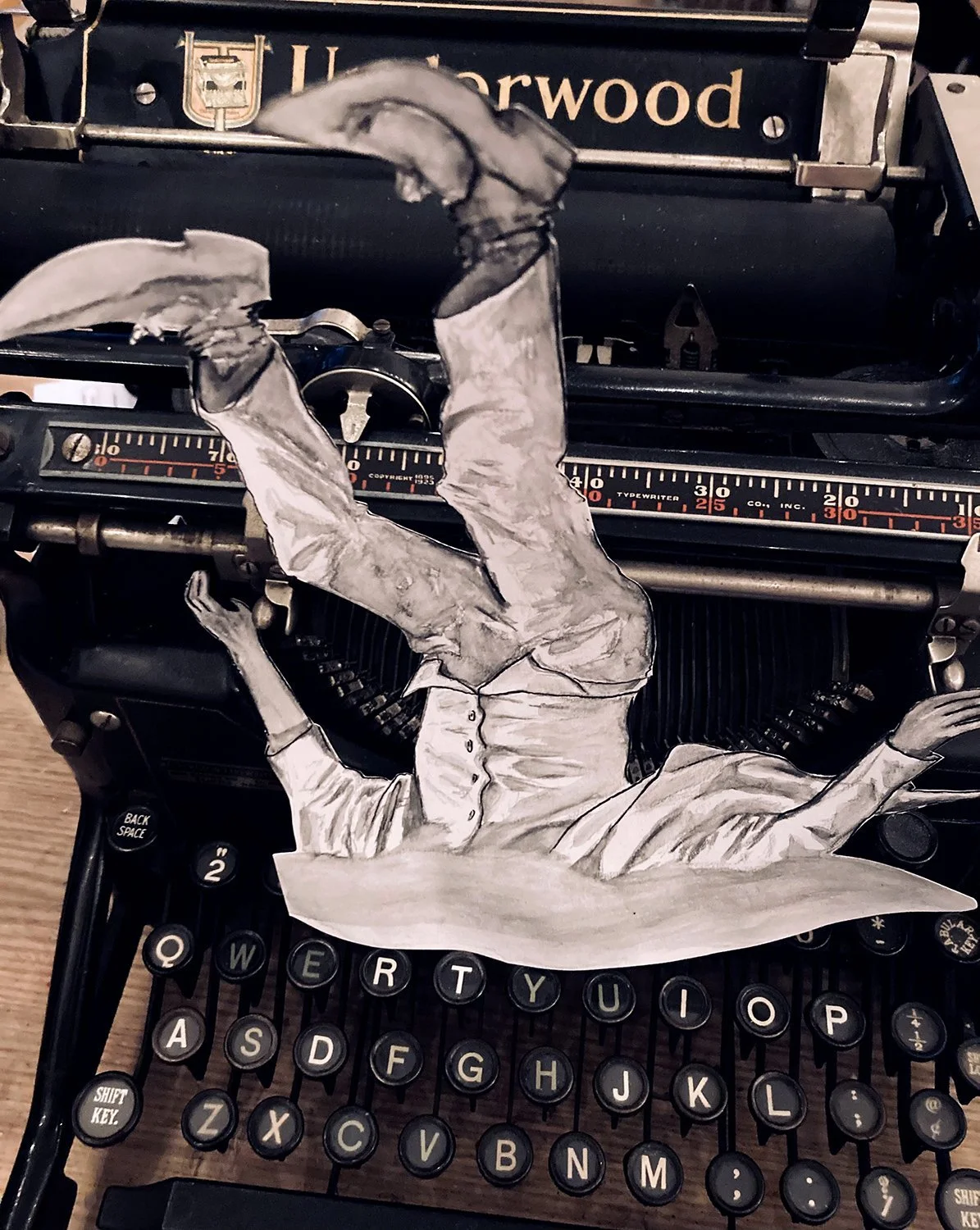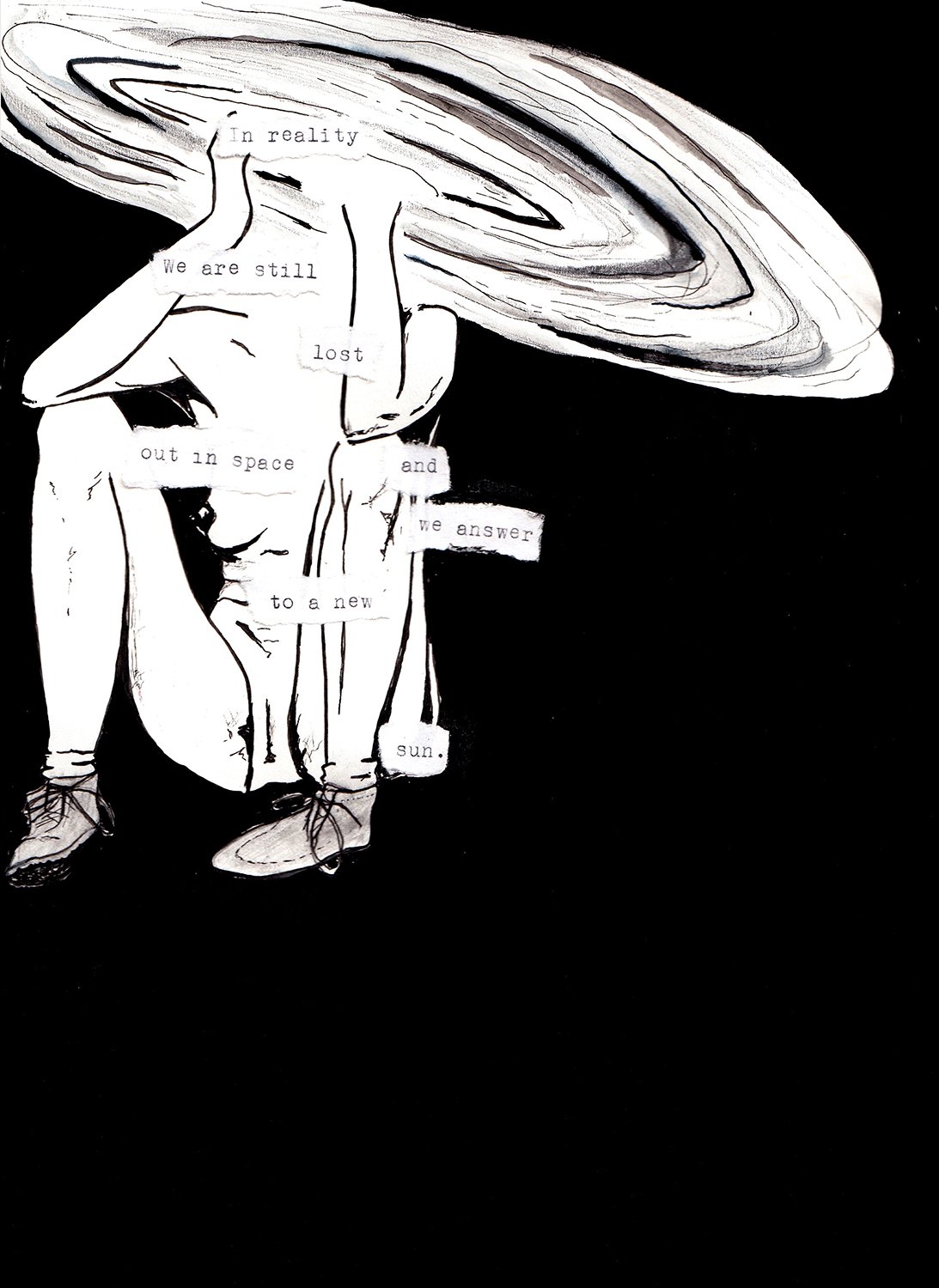10 Questions with Chelsea Malia Brown
THE ORIGINAL ISSUE10 Art Magazine | Featured Artist
Chelsea Brown is an artist and poet based in the U.S. She creates work inspired by her chronic illness and the feeling of losing autonomy and control of her body, mind, and connection to others. Her artwork primarily features the female form, paired with symbols that narrate power and vulnerability, but ultimately empowerment.
Since graduating from the University of WA with a Bachelor of Arts, Media, and Culture and minor in poetry, her work has been published and exhibited in magazines and exhibitions around the world
Chelsea Brown - Portrait
ARTIST STATEMENT
Chelsea Brown explores illness, loss, and mental health in her work, navigating the contrast between isolation and connection. She is motivated by the complex feelings that come from existing in a system that only understands healing in a linear context and disregards pain in young women. Her artwork mostly features figures alone against a stark background, paired with symbols representing vulnerability, power, chaos, and order. To examine how these are balanced in the body, each piece moves between color and black and white, and dark and light, ending with a tone of resilience and hope.
The use of plant life represents new growth, possibility, and promise, and space represents the dichotomy between the chaos of humanity and the order often found in space. The moon will always orbit the sun, and gravity will hold us to the ground, yet no force exists to keep us together as humans.
Reality, Sumi ink and water-soluble graphite, 12x9 in, 2019 © Chelsea Brown
INTERVIEW
First of all, introduce yourself to our readers. What is your artistic background and how did you start experimenting with images?
I am Chelsea Malia Brown, and I am an artist and poet.
I have felt compelled to create since I could first hold a pen. I told everyone that I wanted to be an artist when I grew up, but after I got my art degree, I could never find a work situation that let me be an artist.
Right before the pandemic, I lost my accounting job in a company-wide lay-off. I was dealing with complex and progressive health issues and living alone, so I threw myself into my art. It was crucial in getting me through the emotional and psychological effects of losing trust in my body and the system that cares for me.
You have an interesting story and upbringing, as you grew up in remote areas of Oregon and Alaska. How did this influence your art?
I had a lot of time to wander and get lost in my imagination growing up on a llama farm as an only child. With open spaces and parental support, I was able to cultivate an ability to dream and explore creatively. This has helped me as an adult living in cramped apartments or uninspiring living situations.
Growth © Chelsea Brown
How would you define yourself as an artist?
I consider myself a contemporary artist, but I don’t like to put myself into a box. I go through phases of exclusively creating in a particular style and using a certain medium, and then it shifts into something new, and I let it.
Can you tell us about the process of creating your work?
Before I start a piece, a concept comes to me. Sometimes it starts as just words or an image, but the whole piece usually comes together in my mind as I walk or drift off to sleep. The poet Ruth Stone’s process is very similar to mine. “It was like a thunderous train of air, and it would come barreling down at her over the landscape. And when she felt it coming... Cause it would shake the earth under her feet, she knew she had only one thing to do at that point”.
Once I have an idea, I brainstorm all the aspects of the piece before I start. I look up the meaning behind certain flowers to match the main concept and take reference photos. Next, I create my work in layers (the body is separate from the supporting images, which is separate from the background) which adds an essential depth. At the final stage, I spend time creating the right composition, until it reflects my original concept or becomes something new.
Some of the key themes in your art are “chronic illness, and the loss of control of the body, mind, and connection to others”. What other themes do you pursue?
My work directly reflects my inner world at any given moment, so my themes change. My main theme has been chronic illness because it has been a forced focus in my life, but I also create work following themes of love, purpose, and loss. I manifest the complicated, often negative feelings around each theme, but I try to end with a resilient and promising tone.
Illusion, Water-soluble graphite, sumi ink, 17x14 in, 2021 © Chelsea Brown
Falling prey to an illusion, 2021 © Chelsea Brown
Do you have a role model that you’ve drawn inspiration from when creating your art?
Lately, I have been particularly inspired by Frida Khalo. She also dealt with ongoing health issues and spent most of her life in bed, pouring her pain into her work. Her ability to communicate her experiences authentically has helped me as I try to do the same.
I have also been inspired by Hemingway, with who I have some parallels as well. He shared one of my conditions and went through his life undiagnosed, dismissed, and struggling with his health, yet still wrote, met other artists, and traveled the world.
It is influential in staying on course for me to imagine other artists and writers, present and past, who faced loss and used it to excel.
What’s the essential element in your art?
Unless I am doing a portrait of someone, I don’t include faces in my work. This is essential because it paradoxically creates an intentional connection to each piece and represents a loss of humanity and connection. When I create work about feeling lost or disconnected, it would lose power if there was a face that someone might find recognition in. I also want people to be able to place themselves in the images, so anyone dealing with similar situations knows they are not alone.
Do you find that the shift to digital exhibitions and art fairs has helped you promote your work?
I have enjoyed sharing my work more online and through social media this last year, because it has helped me connect with artists from around the world that I otherwise would never have met.
I am very grateful for the opportunities that have been available online during the pandemic, but I am excited to show my work again in person. I feel like physical exhibitions are more personal, and an element of that is lost through digital exhibitions.
Nihilism is Pointless © Chelsea Brown
Lost copy © Chelsea Brown
What do you think about the art community and market?
I love the art community, locally and globally, that seems to be growing stronger and more connected through the forced disconnection of the pandemic. When I was growing up, it felt like the art world wasn’t supported or respected, and I don’t feel that as much now. Unfortunately, I still feel like the market is tough. It is possible to profit from selling work at exhibitions, prints online, or commissions, but it feels difficult to thrive as a working artist.
Finally, any projects you are looking forward to for this year?
I have been waiting to submit work to exhibitions until travel is safer, but being in a physical group and solo exhibition are the next steps for me post-pandemic.
For now, I am doing everything I can from home. I create work almost every day, submit artwork and poetry to magazines, and I am assembling a chapbook. I have enjoyed the ability to work with artists, magazines, and literary journals from all over the world throughout the pandemic, and I am excited about what is next.
























